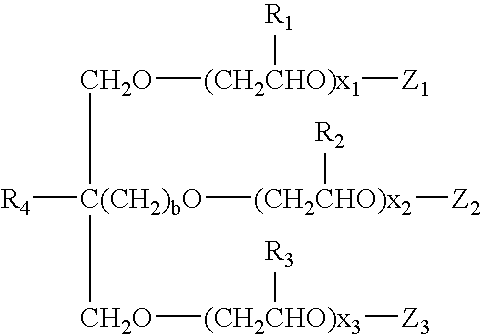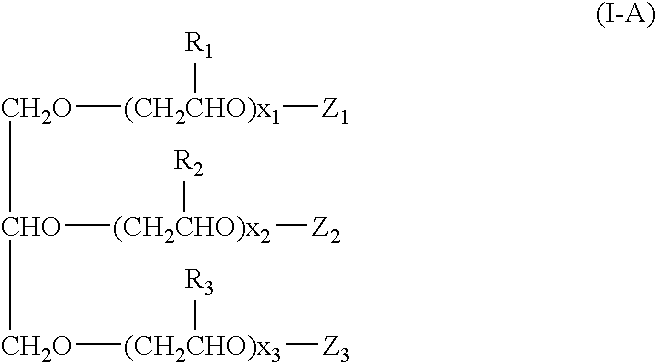Glycerol derivatives for inkjet inks
a technology of inkjet printing and derivatives, applied in the field of inkjet printing, can solve the problems of curl control, inability to print on plain paper, and inability to achieve the effect of physical curling of paper on plain paper receivers
- Summary
- Abstract
- Description
- Claims
- Application Information
AI Technical Summary
Benefits of technology
Problems solved by technology
Method used
Image
Examples
examples
[0062]In order to demonstrate the beneficial effect of the ink components of the invention, the inkjet inks shown in Table 1 were prepared by simple mixing of the component ingredients. Each ink in Table 1 contains 16.0 g of self-dispersed carbon black dispersion CABOT IJX-597 available from Cabot Corporation. The carbon black dispersion comprises about 15% solid carbon black pigment. The inks in table 1 also contain 34.4 grams of high purity filtered water.
[0063]
TABLE 1Ink exampleInk additivenumberInk additiveamount (grams)1glycereth-7 methoxide19.62glycereth-7 triacetate29.61Available as COSCAP G7-MC from Phoenix Chemical, Inc.2Available as PELEMOL G7A from Phoenix Chemical, Inc.
[0064]As comparative examples, the inks in table 2 were prepared. As with the inventive inks described in Table 1, each ink of the comparative examples contain 16.0 g of CABOT IJX-597 carbon black dispersion and 34.4 g of high purity filtered water.
[0065]
TABLE 2Ink comparativeInk additiveexample numberInk ...
PUM
| Property | Measurement | Unit |
|---|---|---|
| weight percent | aaaaa | aaaaa |
| gloss | aaaaa | aaaaa |
| viscosities | aaaaa | aaaaa |
Abstract
Description
Claims
Application Information
 Login to View More
Login to View More - R&D
- Intellectual Property
- Life Sciences
- Materials
- Tech Scout
- Unparalleled Data Quality
- Higher Quality Content
- 60% Fewer Hallucinations
Browse by: Latest US Patents, China's latest patents, Technical Efficacy Thesaurus, Application Domain, Technology Topic, Popular Technical Reports.
© 2025 PatSnap. All rights reserved.Legal|Privacy policy|Modern Slavery Act Transparency Statement|Sitemap|About US| Contact US: help@patsnap.com



